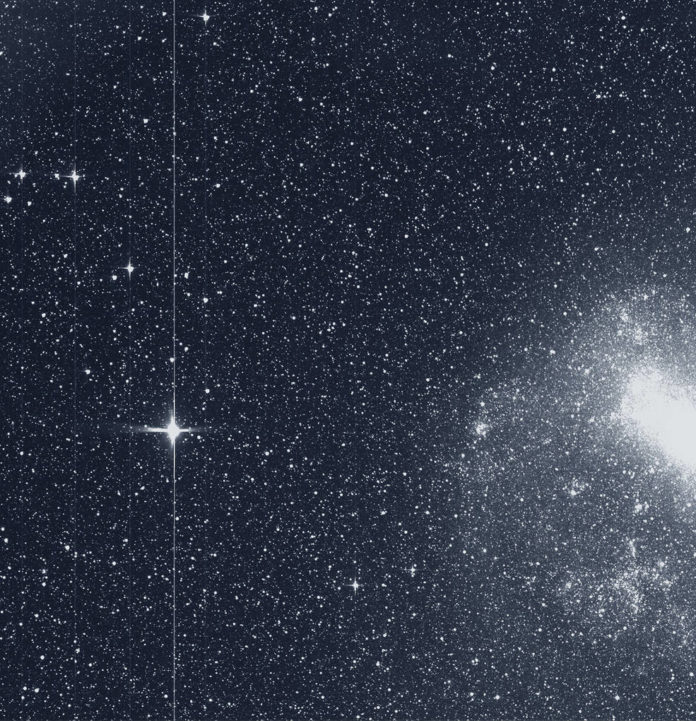NASA’s newest planet hunter, the Transiting Exoplanet Survey Satellite (TESS) have recently captured a detailed picture of the southern sky taken with all four of the spacecraft’s wide-field cameras. This “first light” science image catches an abundance of stars and different objects, including systems that are previously known to have exoplanets.
TESS acquired the image using all four cameras during a 30-minute period on Tuesday, Aug. 7. The black lines in the image are gaps between the camera detectors. The images include parts of a dozen constellations, from Capricornus to Pictor, and both the Large and Small Magellanic Clouds, the galaxies nearest to our own.
The small bright dot above the Small Magellanic Cloud is a globular cluster — a spherical collection of hundreds of thousands of stars — called NGC 104, also known as 47 Tucanae because of its location in the southern constellation Tucana, the Toucan. Two stars, Beta Gruis and R Doradus, are so bright they saturate an entire column of pixels on the detectors of TESS’s second and fourth cameras, creating long spikes of light.
Paul Hertz, astrophysics division director at NASA Headquarters in Washington said, “This first light science image shows the capabilities of TESS’ cameras, and shows that the mission will realize its incredible potential in our search for another Earth.”
George Ricker, TESS principal investigator at the Massachusetts Institute of Technology’s (MIT) Kavli Institute for Astrophysics and Space Research in Cambridge said, “This swath of the sky’s southern hemisphere includes more than a dozen stars we know have transiting planets based on previous studies from ground observatories.
TESS’s cameras monitor large swaths of the sky to observe transits. Transits occur when a planet goes before its star as saw from the satellite’s point of view, causing a regular dip in the star’s brightness.
TESS will spend two years monitoring 26 such sectors for 27 days each, covering 85 percent of the sky. During its first year of operations, the satellite will study the 13 sectors making up the southern sky. Then TESS will turn to the 13 sectors of the northern sky to carry out a second year-long survey.
TESS builds on the legacy of NASA’s Kepler spacecraft, which also uses transits to find exoplanets. It target stars are 30 to 300 light-years away and around 30 to 100 times brighter than Kepler‘s objectives, which are 300 to 3,000 light-years away. The brightness of TESS’ targets makes them perfect candidate for follow-up consider with spectroscopy, the investigation of how matter and light interface.
Padi Boyd, TESS project scientist at NASA’s Goddard Space Flight Center in Greenbelt, Maryland said, “We were very pleased with the number of guest investigator proposals we received, and we competitively selected programs for a wide range of science investigations, from studying distant active galaxies to asteroids in our own solar system. And of course, lots of exciting exoplanet and star proposals as well. The science community is chomping at the bit to see the amazing data that TESS will produce and the exciting scientific discoveries for exoplanets and beyond.”
